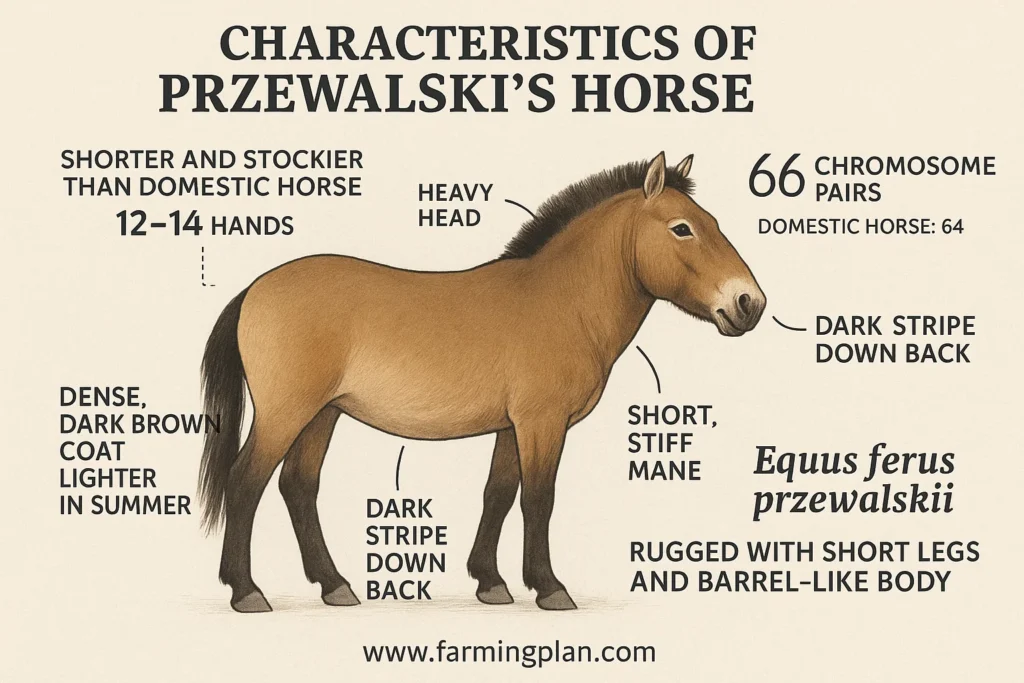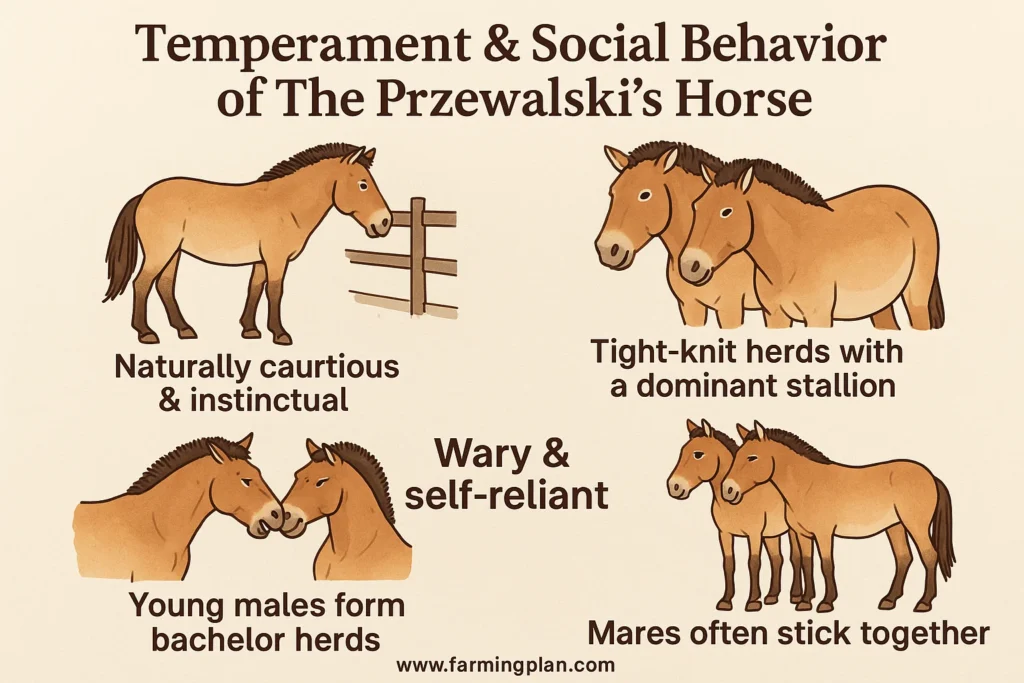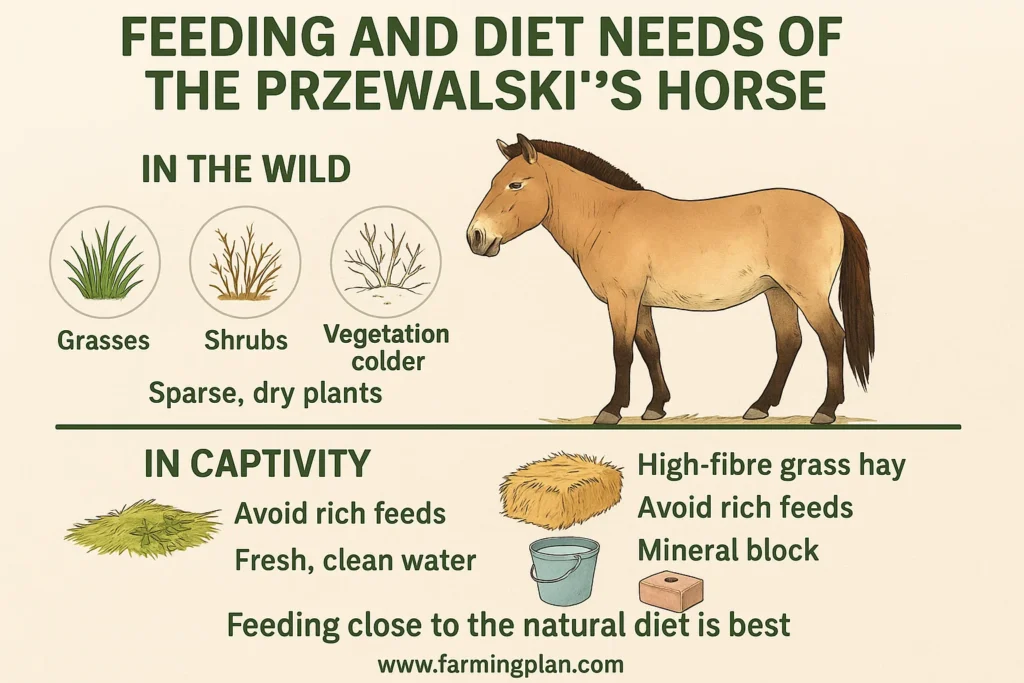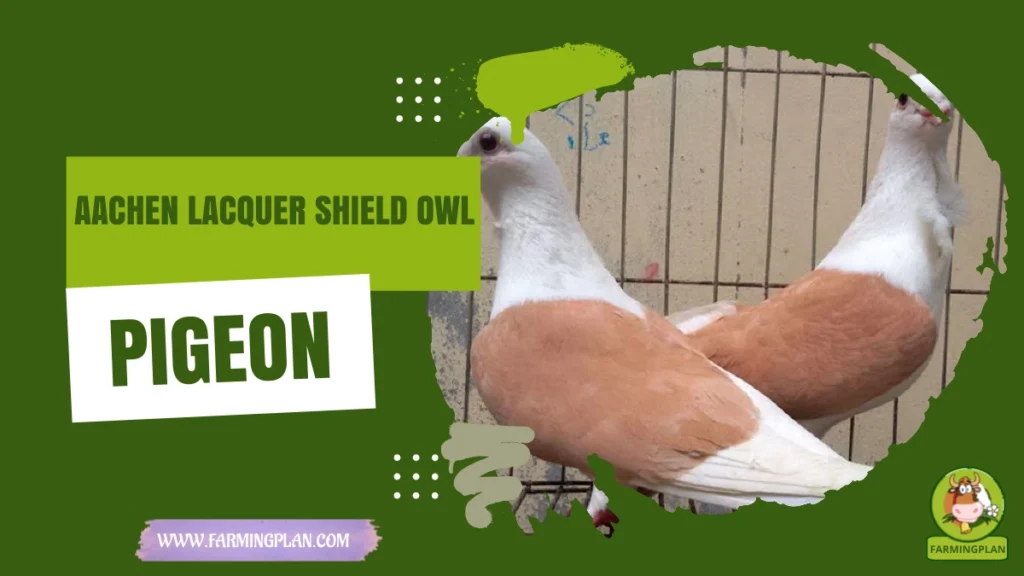If you haven’t heard of the Przewalski’s Horse, you’re in for a treat. Known as the Mongolian Wild Horse or Chevalsky Horse, they are the only truly wild horses left on Earth. Unlike feral domestic horses, they’ve never been tamed and carry ancient DNA, making them living fossils. With their stocky build and upright manes, these fascinating animals have captivated me during my work in conservation. In this article, I’ll share their history, unique traits, diet, social behavior, and a practical care guide for those involved in their preservation. Let’s explore these incredible wild horses together!

History & Origin Of The Przewalski’s Horse
Let’s rewind to the 6th century BCE. That’s when ancient records first hinted at a wild, upright-maned horse roaming the steppes of Central Asia. Fast forward to the 19th century, and Russian explorer Nikolay Przhevalsky officially brought them to global attention. That’s how they got their name, though we all pronounce it differently (I stick with “shut-VAL-see”).
Unlike the mustangs or brumbies you hear about, these horses were never domesticated. They roamed Mongolia and parts of China freely until habitat loss, cold winters, and foal capture wiped them out in the wild by the 1960s. A handful survived in zoos, and that tiny captive population sparked one of the most remarkable comeback stories in conservation history. Thanks to careful breeding programs and reintroduction projects today, especially in places like Khomiin Tal, they’re trotting their way back into the wild. From nearly extinct to rewilded—that’s a journey worth telling.
Characteristics Of The Przewalski’s Horse
Now, what makes these horses so unique? First, they’re shorter and stockier than your average domestic horse—usually between 12 to 14 hands. They sport a dense, dark brown coat that gets lighter in summer, a telltale dark stripe running down their back and a short, stiff mane that doesn’t flop.

But here’s the kicker: they have 66 chromosome pairs, while domestic horses have 64. That might not sound like much, but it’s a big genetic deal. It makes them their wild species, scientifically known as Equus ferus przewalskii. They’re equine royalty when it comes to genetic diversity. Their heavy heads, short legs, and barrel-like bodies give them a rugged edge that helps them survive in brutal environments. These are horses built for endurance, not elegance.
Read more: How To Care For A Sorraia Horse: A Step-By-Step Guide
Temperament & Social Behavior of The Przewalski’s Horse
You won’t find a Przewalski’s Horse leaning over a fence asking for snacks. They’re naturally cautious and deeply instinctual. In the wild or large enclosures, they form tight-knit herds led by a dominant stallion and a lead mare. Young males form bachelor herds until they’re old enough to start their own families.

Their social interactions are intense. Stallions can get pushy during breeding season, and mares often stick together for safety and stability. Unlike domestic horses that have grown comfortable with humans, these wild ones remain wary and self-reliant. I always advise giving them space and observing quietly—their natural behaviour is something to behold.
Feeding And Diet Needs of The Przewalski’s Horse
When I care for Przewalski’s Horses, their diet gets my attention. In the wild, they forage on grasses, shrubs, and whatever vegetation survives the cold winters. They have evolved to survive on sparse, dry plants that domestic horses wouldn’t touch.

In captivity, I provide high-fibre grass hay, sometimes mixed with seasonal herbs or grains. But I avoid rich feeds—they can’t handle them like a domestic horse can. Always ensure fresh, clean water is available. Mineral blocks help, too, especially in cold climates where nutrient intake dips. Feeding them close to how they eat in the wild is the best way to keep them healthy.
Read More: Caspian Horse: The Surprising Strength of the World’s Smallest Equine
Purpose And Role In Conservation of The Przewalski’s Horse
So, what’s the point of keeping these horses around if we can’t ride or farm with them? They play a massive role in restoring ecosystems and preserving ancient horse genetics. As grazers, they help balance vegetation in places like Mongolia’s grasslands.
Their reintroduction into the wild is more than just symbolic; it helps revive entire habitats. Plus, they’re incredibly valuable in genetic research. Knowing how these horses evolved and survived helps us understand more about domestic horse ancestry and natural selection. And honestly, being part of their comeback story feels amazing.
Special Features of The Przewalski’s Horse
Let’s discuss their special features. In addition to their rugged look and wild DNA, they have a dense winter coat that keeps them warm through sub-zero nights. Unlike many captive animals, their social structures are intact, and they keep their instincts sharp, whether they’re in a zoo or a semi-wild preserve. They’re also survivors. Harsh winters? No problem. Sparse desert habitat? They manage. Their ability to adapt without losing their identity makes them fascinating. And did I mention they’re the only wild horse species that’s never been domesticated? That alone earns them bragging rights in the animal kingdom.
Health Issues And How I Prevent Them
While Przewalski’s Horses are hardy, they’re not invincible. In captivity, they’re prone to digestive issues like colic if their diet isn’t fibre-rich. Overweight animals can develop laminitis, and stress-related illnesses can appear if they don’t get enough space or stimulation. For me, prevention means sticking close to their natural way of life. Spacious pastures, herd companionship, proper forage, and regular vet check-ups keep things on track. I also rotate enclosures to mimic natural grazing and prevent parasite buildup. The trick is to stay one step ahead of potential problems.
Treat Every Captive Enclosure Like A Wild Steppe—Because When You Honor Their Instincts, Przewalski’s Horses Truly Come Alive.
Step-By-Step Care Guide For Captive Management
This hands-on, expert-backed guide teaches you how to properly care for captive Przewalski’s horses. From habitat design to herd management and breeding, every step mirrors their natural life in the wild.
Step 1: Build A Wild-Inspired Enclosure
When I design a space for Przewalski’s horses, I picture the open Mongolian plains where they belong. I always aim for at least 5–10 acres per small herd, using rounded, high-tensile fencing to keep them safe during gallops or skirmishes. Sharp corners are a no-go—they lead to injury.
The ground matters, too. I leave the terrain natural—dust patches, tufts of tough grass, scattered rocks, and uneven areas that challenge their muscles. I also install simple shelters using logs, canvas, or thatch and plant trees for shade. Streams or solar-powered water troughs with slow trickling water keep the site fresh. It’s not just about comfort—it’s about keeping their instincts alive.
Step 2: Feed With Their Ancestry In Mind
These aren’t grain-fed show ponies—they’re desert-hardened grazers. I feed only native grasses or high-fibre hay. I’ve seen how alfalfa or rich pellets can throw off their metabolism. Przewalski’s horses do best on what’s dry, sparse, and tough. I occasionally add sagebrush, dried herbs, or dry leaves to mimic wild grazing. Feeding twice a day works well, and I always scatter the feed across the enclosure to keep them moving. Mineral licks are placed throughout, just like natural salt spots. I warm their water slightly in winter—they’re tough, but frozen water bowls don’t help anyone.
Step 3: Recreate A True Herd Life
These wild horses are intensely social. I never isolate one—it stresses them out and causes behaviour issues. A typical setup includes a dominant stallion, a few mares, and their foals. Bachelor herds also work for younger males. But it’s not always peaceful. I’ve broken up fights, separated stallions, and had to mediate breeding-season chaos. I rotate or reshuffle members based on their behaviour. Monitoring herd dynamics daily prevents serious injuries and helps foals learn proper behaviour from adults.
Step 4: Commit To Consistent Health Checks
Veterinary support isn’t optional—it’s your lifeline. I schedule monthly health inspections, even when everything looks fine. I track weight, hoof condition, coat sheen, and odd behaviour. Parasite loads are weighty, so I rotate dewormers and test manure every season. Vaccines follow equine protocols, but I tweak the schedule with local vets depending on disease risks in the region. When a horse seems off, I don’t wait—it catches things early, which is always better. Preventive care saves lives.
Step 5: Breed For The Future, Not Just For Fun
If you’re breeding, you’re part of something bigger. I always work with conservation programs. Genetic diversity is a non-negotiable goal. That means tracking lineages, avoiding inbreeding, and selecting pairs carefully. Sometimes, artificial insemination helps us bring in genes from horses thousands of miles away. Each foal is logged, tagged, and entered into our database with medical and ancestral history. We’re not just making more horses but preserving the last wild ones.
Read More: Marwari Horse: The Royal Breed That Stands Out with Curved Ears and Courage
Expert Tips & Best Practices
- Tips: Never Isolate A Przewalski’s Horse For Too Long—They’re Herd Animals Through And Through.
- Join global conservation efforts. Share data with other breeding centres.
- Keep their diet consistent year-round to avoid digestive issues.
- Rotate pastures monthly to simulate migration and prevent overgrazing.
- Watch for subtle behavioural changes—they often signal health problems before physical symptoms.
FAQ
Why is the Przewalski’s Horse endangered?
They became endangered due to habitat loss, harsh winters, and hunting, but conservation programs saved them from extinction.
Is the Przewalski’s Horse different from a domestic horse?
Yes. It has 66 chromosomes and has never been domesticated, making it the world’s only wild horse.
Can Przewalski’s Horses be tamed or ridden?
Nope. They’re too wild and instinct-driven. They’re not meant for riding or domestic work.
Where can I see a Przewalski’s Horse?
You’ll find them in select zoos and reserves worldwide and rewilded areas in Mongolia.
How do conservationists breed them safely?
They use structured programs, including artificial insemination, to ensure genetic diversity and avoid inbreeding.
Conclusion
The Przewalski’s Horse is more than a conservation story—it’s a living, breathing reminder of wild resilience. As someone who’s spent years caring for them, I can tell you they’re challenging, fascinating, and totally unlike any domestic horse. They can thrive again with the proper setup, patience, and grit. Whether you’re in conservation, education, or just curious, these horses show us what nature can do when we get out of the way and let wild things be wild.


